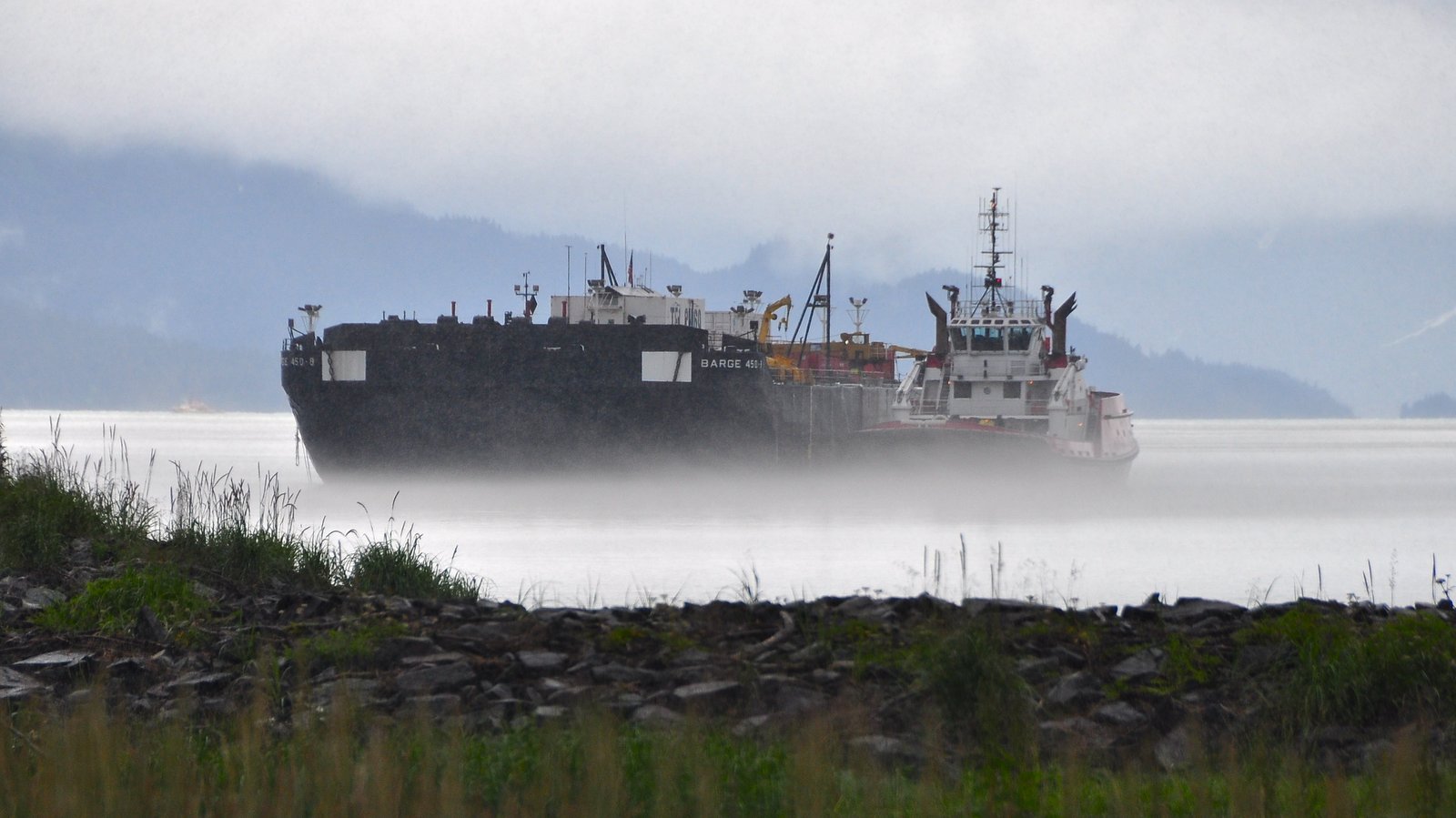You Can’t Have Your Baked Alaska and Eat It Too

Barge in Fog – Valdez, Alaska. Photo: Cecil Sanders
Today, the phrase ‘Arctic energy’ has become synonymous with snowy oil rigs, icy ocean exploration, and Greenpeace activists. The recent conditional approval of Shell’s plans to drill in the Chukchi Sea has reinforced this narrow delineation of what’s included in energy debates about the top of the world.
Reflective of how the lower 48 views the Arctic more generally, northern energy is written as an extractive narrative. From the opening of shipping routes to warnings of climate change consequences, the Arctic is frequently framed and valued by how it can help those living below 66 Degrees.
But, under the new US Arctic Council leadership, northern energy has the potential to move beyond its extractive definition predicated on global profits to instead focus on local paybacks. As Arctic Council Chair for the next two years, the US has announced a campaign to focus on increasing access to renewable energy in remote Arctic communities.
In the North, Arctic energy isn’t about global commodity markets or climate change – it’s about survival. Because of little transportation infrastructure and immense distances between communities, rural Alaskans are burdened by some of the highest energy prices in the country. The high costs of shipping or flying in diesel fuel have created energy migrants, American citizens who are forced to leave their ancestral homes because they can no longer afford electricity and heating expenses. Although many communities in the Arctic possess great wind, hydro, and geothermal resources, small profit margins and technical hurdles have hindered their development.
As Chair, the US plans to change the role renewables play in rural Alaska’s energy security. To do this, the Remote Community Renewable Energy Partnership (RCRE), a joint research project between the Departments of Interior and Energy, will ease integration of wind power into Alaska’s diesel microgrids. Internationally, the Arctic Energy Summit, to be held in Fairbanks this September, will be a best-practice sharing symposium for American engineers and politicians to learn about hydropower in Norway, geothermal in Iceland, and energy efficiency in Finland.
While horizontal cooperation across the region is important in supporting Arctic communities as they transition towards clean energy, the most advantageous partnership in redefining Arctic energy may be a vertical one between national, state, and local stakeholders.
Developing Alaska’s renewable energy resources means good paying jobs for local residents, keeping more money in communities and sending less out on diesel barges, and fostering healthier villages. In short, it provides the potential to transform Alaska’s economy from an extractive, carbon intensive industry into sustainable, human-centric development. With the state anticipated to run a budget deficit of $3.5 billion in 2015 as a result of low crude oil prices, Alaska is in need of innovative options to revise and revitalize its economy.
A vertical partnership that is inclusive of Alaska’s government would allow the Chairmanship’s initiative to address national, state, and local needs simultaneously. Locally, the initiative could significantly lower energy costs while alleviating the public health risks of black carbon emissions produced by diesel fuel. At the State level, investing in renewable energy research, development, and implementation holds the potential to fill the economic shortfalls incurred by low oil prices. And nationally, the chance to turn Alaska – an oil intensive state that ranks second in US energy consumption per Capita – into a countrywide success story for sustainable development would not only help the President meet his Climate Action Plan, but could also make a serious symbolic statement on America’s commitment to emission reductions.
A vertical partnership for redefining Arctic energy security will take hard work and a determined commitment by the federal government to be inclusive and flexible. It will require thorough engagement at all levels of government, an aspect largely lacking in America’s current national Arctic framework. More importantly, it necessitates an alignment of national and state goals through a single nationally supported, locally implemented vision for Arctic energy. Such a vision would need to harmonize contentious policy actions, like the Obama Administration’s approval of Shell Oil’s drilling plans with their simultaneous proposal to move Alaskan villages away from oil dependency towards renewables, for long term sustainability.
Earlier this week, during the G7 Summit in Germany, world leaders stressed the need for urgent and concrete action to address climate change. Conscious of the need to leave an enduring legacy come 2016, President Obama is eager to see the G7’s pledges realized through a binding, US brokered climate agreement in Paris later this year.
But as the Obama administration intensifies their focus on December’s UN climate negotiations to make a lasting milestone in the global battle against climate change, the White House would be wise to remember the opportunity provided by its newly endowed leadership role at the top of the world.
Through a vertical partnership for renewable Arctic energy, rural Alaskan villages can enjoy energy security; the Alaskan state can ensure economic vitality; and the United States can demonstrate robust leadership on concrete climate action not only within the circumpolar region, but across the globe.